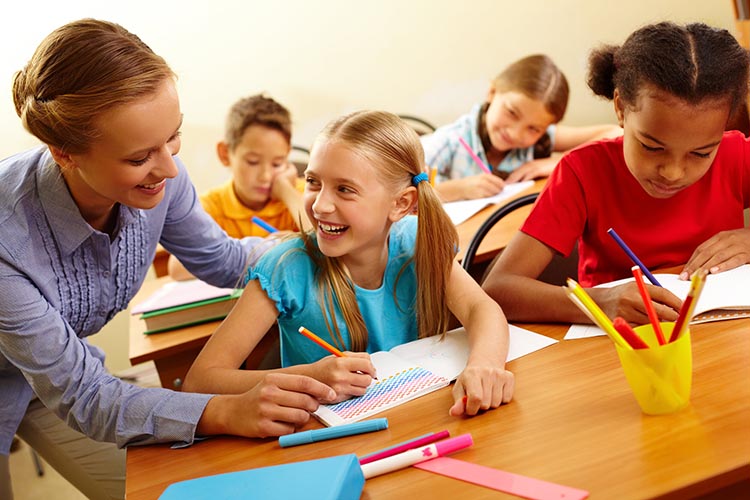
From K-12 Dive
By Lauren Barack
Sept. 22, 2021
Dive Brief:
Educators can offer a variety of strategies and tools to elementary students to help them reengage in classroom learning and strengthen their focus when they feel overwhelmed by stimuli around them, occupational therapist Lauren Brukner writes for Edutopia.
Some of these strategies can incorporate physical and sensory activities, such as children giving themselves a hug across their back or their knees. Others include having Velcro or string placed throughout the room so students can have something tactile to touch while working.
Teachers can also create spaces where students can sit alone for a moment, have classes pause for a yoga pose, have floor desks available, or set up large baskets or boxes filled with pillows to create spaces where they can retreat and still work. All can help young children focus, while also decreasing the stimuli around them.
Dive Insight:
As students return to the classroom, they may benefit from additional resources that can help them readjust to in-person learning. While virtual learning brought its own challenges, a school setting requires more discipline in some regard with students not able to walk away from a screen or turn off a camera for a break.
Social interactions, too, may be distracting in a way they haven’t been for the past year, as well as the stimuli from being around fellow students. All of these can play a role in making it difficult for students to focus while in class.
But there are tools educators can weave into the school day that can support students who are finding their attention waning. Adding mindfulness lessons, from meditation to reflection, has been shown to help reduce anxiety for both students and teachers, for example. Additionally, mindfulness exercises can help to boost flagging energy, as well as improve a child’s focus while in the classroom.
Giving students tangible and reachable goals may be useful, as well — with targets that children can track weekly and also achieve. These can show children when they focus, even for short periods, they can see their focus has an effect on helping them move forward with learning goals. Recognizing them for this achievement can support learning, as well.
Reducing noise in a classroom can also help create an environment that’s less distracting for students. In a small space, sound can be mitigated by something as simple as adding a small rug or encouraging students to reduce classroom cross-talk during lessons.
Having tools available to help classes as they return back to in-person learning can support students who may need a bit of help readjusting to school, as well as support educators eager to see their classes succeed.
Photo: Education Unbound
Read this and other stories at K-12 Dive

